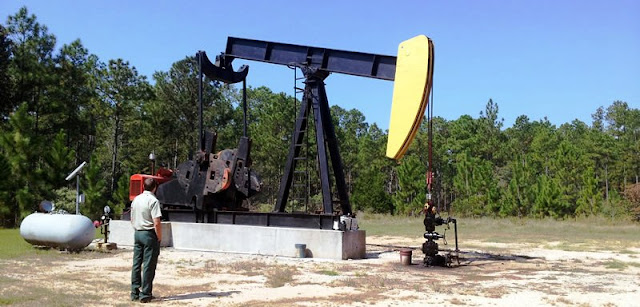
- Introduction to Natural Resources of the United States
- Major Natural Resources of United States
- Greatest Natural Resources of the United States
Introduction to Natural Resources of the United States
(ii) Non-renewable Resources and
(iii) Flow Resources.
People use natural resources to make energy. We use energy for electricity, heat, and transportation.
The first Americans used natural resources, such as water, soil, plants, and animals. Food, clothing, houses, and fuel all come from natural resources. Trees and other living things are renewable resources. Soil is renewable if it is used carefully. Rich soil covers much of the land in the United States. There are great forests in North America. The oceans are a source of seafood. Rivers provide transportation routes and their flow generates power.
Minerals like copper and iron are nonrenewable resources. They were formed over millions of years. Once we use them up, they will be gone forever. Most of our energy comes from burning fossil fuels, such as coal, oil, and natural gas. The United States produces much of the world’s fossil fuels. It also uses more fuel than any other country.
Sunlight, wind, and water are flow resources. We can use their energy as they move through the environment. SourceMajor Natural Resources of the United States
Coal, copper, lead, molybdenum, phosphates, uranium, bauxite, gold, iron, mercury, nickel, potash, silver, tungsten, zinc, oil and natural Gas and a number of rare earth elements are notable non-renewable natural resources of U.S.A.Major Non-renewable Natural Resources of the United States
Coal
U.S. Total Coal Reserve and Global Rank: With 250,219 million tons proven coal reserve in 2018, the United States rank 1st, having 22% of the world’s total coal reserve.
Oil
U.S. Total Oil Reserve and Global Rank: With 69 billion barrels U.S. ranks 9th.
Major Oil Producing U.S. States: Texas, Alaska, California, North Dakota, New Mexico, Oklahoma.
Natural Gas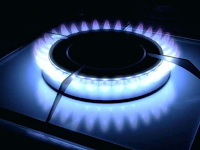
U.S. Total Natural Gas Reserve and Global Rank: Having 12.9 trillion cubic meters natural gas, U.S. ranks 5th.
U.S. Ranking in Natural Gas Production: 1st (34 trillion cubic feet)
Major Natural Gas Producing U.S. States: Texas, Pennsylvania, Louisiana, Oklahoma, Ohio.
Helium
U.S. Global Rank in Helium Reserve: 1st
U.S. Ranking in Helium Production: 1st
Major Helium Producing U.S. States: Arizona, Colorado, Kansas, Oklahoma, Texas, Utah, Wyoming.
Uranium
U.S. Total Uranium Reserve and Global Rank: With 47,200 tons U, U.S. ranks 15th.
U.S. Ranking in Uranium Production: 10th (582 tons U)
Major Uranium Producing U.S. States: Western U.S. states has the largest deposit of uranium.
Copper
U.S. Total Copper Reserve and Global Rank: With 51 million metric tons U.S. ranks 6th in copper reserve.
U.S. Ranking in Copper Production: 4th (1,260 thousand tons)
Major Copper Producing U.S. States: Arizona, Utah, New Mexico, Nevada, Montana.
Lead
U.S. Total Lead Reserve and Global Rank: Having 5 million metric tons, U.S. ranks 6th in lead deposit.
Molybdenum
U.S. Total Molybdenum Deposit and Global Rank: With 1.7 billion metric tons U.S. ranks 2nd in Molybdenum reserve after China.
U.S. Ranking in Molybdenum Production: 2nd
Major Molybdenum Producing U.S. States: Arizona, Colorado, Idaho, Montana, Nevada, New Mexico, Utah.
Phosphates
U.S. Total Phosphate Reserve and Global Rank: Having 1000 million metric ton deposit, U.S. ranks 12th among phosphate rich countries.
U.S. Ranking in Phosphate Production: 3rd (23 million metric ton)
Major Phosphate Producing U.S. States: Florida, North Carolina, Idaho, Tennessee.
Bauxite
U.S. Total Bauxite Reserve and Global Rank: 20,000 metric ton. Ranks 13th.
U.S. Ranking in Bauxite Production: 13th (3.9 million ton)
Major Bauxite Producing U.S. States: Arkansas, Alabama, Georgia, Virginia.
Gold
U.S. Total Gold Deposit and Global Rank: With 3000 tons of gold reserve, the United States ranks 4th.
U.S. Ranking in Gold Production: 4th (222 tons)
Major Gold Producing U.S. States: Nevada, Alaska, Colorado, California, Arizona.
Silver
U.S. Total Silver Deposit and Global Rank: 25 thousand metric tons, U.S. Ranks 8th.
U.S. Ranking in Silver Production: 10th (930 tons)
Major Silver Producing U.S. States: Alaska, Montana, Nevada, Idaho.
Iron Ore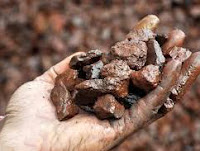
U.S. Total Iron Reserve and Global Rank: The United has 48 million ton usable ore with 31 million ton iron content to capture 9th rank in iron ore deposit.
U.S. Ranking in Iron Production: 9th (48,000 thousand tons)
Major Iron Producing U.S. States: Michigan, Minnesota, Utah.
Nickel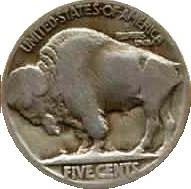
U.S. Total Nickel Deposit and Global Rank: With 130,000 Metric Ton nickel deposit, U.S. ranks 13th.
U.S. Ranking in Nickel Production: 10th (14,000 metric ton)
Nickel Producing U.S. State: Michigan.
Potash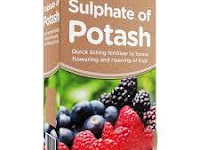
U.S. Global Rank in Potash Deposit: 10th with 7 billion metric ton reserve approx.
U.S. Ranking in Potash Production: 10th (5,10,000 metric ton)
Major Potash Producing U.S. States: Montana, North Dakota, Utah, Arizona, Michigan.
Zinc
U.S. Total Zinc Reserve and Global Rank: With 11 million metric tons, U.S. ranks 6th.
U.S. Ranking in Zinc Production: 5th (7,80,000 tons)
Major Zinc Producing U.S. States: Alaska, Idaho, Missouri, Washington, Tennessee.
Salt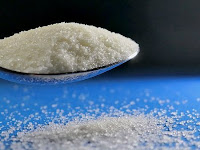
U.S. Ranking in Salt Deposit: 2nd
U.S. Ranking in Salt Production: 2nd (estimated 4,20,00,000 metric tons)
Major Salt Producing U.S. States: Kansas, Louisiana, Michigan, New York, Ohio, Texas.
Rare earth elements

U.S. Total Rare Earth Element Reserve and Global Rank: With 1,400 metric tons REE, U.S. numbered 7th in global ranking.
U.S. Ranking in Rare Earth Element Production: 3rd (15,000 tons)
Major REE Producing States: Wyoming, Colorado, California, Alaska.
Major Renewable Natural Resources of the United States
Arable Land
U.S. Total Arable Land: 407739200 acres (1,650,062 sq km)
Arable Land Percent of the United States: 16.6%
U.S. Arable Land Percent of the World: 10.48%
Total Farmland Area of the United States: 922 million acres (1,441,000 sq mi)
Forest Area
U.S. Global Ranking: 4thUS Total Forest Area: 818,814,000 acres (3,313,622 square kilometers).
Forest Area Percent of the United States: 36.21% (about one-third of the U.S.)
U.S. Forest Area Percent of the World: 7.6%
U.S. Total Timber Production: 481,092,992 Cubic Meters

Greatest Natural Resources of the United States
The geography and geology of the United States provided a tremendous advantage in building its economy. The United States is blessed with an unusual abundance of natural resources, of which six natural resources of the United States have made her possible to emerge as one of the greatest countries in modern history of humanity. These resources are:- Vast Land Mass
- Coastline
- Water
- Farmland
- Oil, Coal and Natural Gas
- Human Resource
Vast Land Mass
Like Australia and Canada, but unlike China and Russia, U.S. have similar-sized landmasses that aren't bordered by enemies. Though European Union has a similar size, it is not one national government.
The vast land provides access to a great source of minerals, various types of forest products, renewable resources such as timbers and flow resources.Coastline
The United States has 95,471 miles (1,53,646 kilometers) of shoreline, including the Great Lakes. The shoreline borders 26 of the 50 states. It is counted one of the great natural resources of the United States.
Water
80% of the water used in America is provided lakes, rivers, and streams. Only 20% has to be pumped out of the ground, mainly to irrigate the semi-arid states of Great Plains according to an estimate of the United States Geological Survey.
Farmland
Unlike Australia, Canada and Russia, the United States was bestowed with temperate climates combined with fertile soil. The early settlers found rich soil on the Great Plains.
The 502,000-square mile area between the Mississippi River and the Rocky Mountains had deposited layers of sediment in thousands of years, created thick sod and productive agriculture.
However the Great Plains is semi-arid, receives less than 24 inches of rainfall a year, on average. So, the Plains became great farmland only after practicing irrigation, from streams fed by the Rockies.Oil, Coal, and Gas
America has the world's largest reserves of coal, apart from having huge reserves of easily accessible oil and natural gas.Human Resource
Above all it mentioned resources; it is the people of the United States, which have made America great.
America’s diverse population of different cultures, which bring fresh ideas and innovation have made the use of other natural resources properly to become a major global power.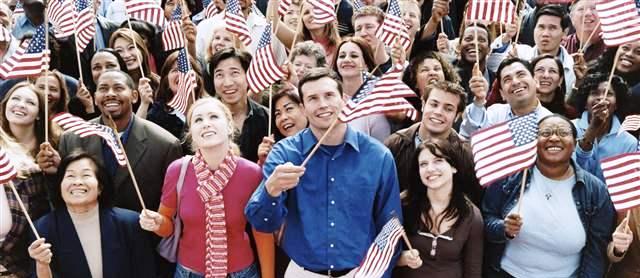
- science.org.au. (May 23, 2007), Earth's natural wealth: an audit.
- National Ocean Service. How Long Is the U.S. Shoreline?
- USGS, Total Water Use.
- dictionary.cambridge.org, Natural Resources.
- www.ifdc.org. S. Van Kauwenbergh (November, 2010), World Phosphate Rock Reserves and Resources.
- Al Jazeera, Helium Production in the World.
- www.investopedia.com, 10 Countries with the Most Natural Resources.
- International Plant Nutrition Institute, Global Potassium Reserves and Potassium Fertilizer Use.
- Reuters, Factbox: Rare earths projects under development in U.S.
- naldc.nal.usda.gov, Arable Land in the United States.
- Data.worldbank.org, Arable land (% of land area) - United States.
- usgs.gov website.
Comments
Post a Comment